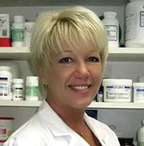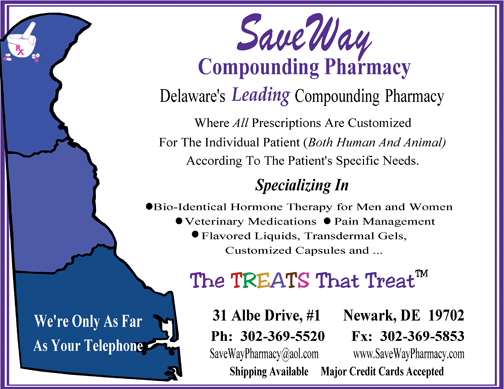Clean Eating and Gut Repair
 By Brenda Pavlic, CPhT
By Brenda Pavlic, CPhT
Gastrointestinal problems are among the most common reasons people seek medical care. Symptoms range from mild: bloating, cramping, gas, indigestion, constipation, and abdominal distention to severe: bleeding, blockage, severe inflammation, or infection. Left untreated, a sick gut can morph into chronic disease affecting the immune system and overall health and well-being. While many of the symptoms of a dysfunctional gut are localized, there are other disease states that are directly related to or affected by gut function. These include heart disease, cancer, auto-immune diseases, mood, depression, allergies, and skin disorders.
Our food and the way we eat has changed more in the last 50 years than it has in the last five thousand. High-fructose corn syrup, corn-fed factory-farmed meat, preservatives, genetically-modified wheat, vegetables, and grains, processed/packaged foods, and hormone-injected dairy are all examples of foods that are being consumed in great quantities like never before.
Discovering your toxic triggers is key to healing your gut. Not everyone will have the same toxic triggers but there are patterns. Dairy and gluten are two of the most common. Some others are corn, soy, grains, wheat, alcohol, caffeine, and processed sugar. The best way to uncover the foods that are problematic for you is by testing them.
One approach to finding your offenders is to adhere to a “clean” diet for 3 weeks. A clean diet consists of eliminating the questionable foods and ingesting only vegetables, good protein, good fats, and complex carbohydrates in the proper ratio and at the right time of day. A good approach is to remove anything “white”; i.e. white sugar, white flour, white pasta, white bread. Check labels and ingredients on everything before you consume it. If you cannot pronounce it or have no idea what it is, do not eat it.
After three weeks, re-introduce the questionable substances one at a time for two to three days and monitor your reaction to each. It is important not to incorporate more than one potential toxic trigger at a time because if you have a negative reaction, you will not be able to discern which food is responsible.
Note: It is helpful to keep a journal to record your diet and any undesirable response that develops.
Once you’ve determined your toxic triggers, you can decide whether to eliminate them or greatly reduce your intake. This process will be done on an individual basis taking several factors into consideration. First and foremost would be how you feel eating “clean” and how negatively you are affected when the foods are re-introduced. Other determining factors are discipline, convenience, time-management, stress, support, expense, etc.
“Old habits die hard.” Making dramatic changes in your diet can be very challenging. Today’s fast-paced, instant-gratification, mass production world does not make eating good, clean, nutritious food easy or easily affordable. Unfortunately, just the opposite is true. However, successfully altering this aspect of your lifestyle might produce benefits that far outweigh the obstacles. If you are suffering from any of the symptoms listed above, it might be worth your while to talk to a nutritionist or healthcare professional knowledgeable about gut function and a healthy diet. Additionally, supplements to aid in digestion, restore gut flora, and address nutritional deficiencies will most likely be recommended.
After working through a clean-eating program and initializing gut repair, most people report that they feel great, have increased energy, improved digestion, heightened mental clarity, weight loss and loss of inches around the waist, and improved sleeping. Today there are so many challenges when it comes to our health. Not only are we bombarded with unhealthy food choices, we also have an onslaught of information via the internet, written articles and books, as well as the well-meaning intentions of others through their opinions. It is important to remember that each person is unique. Their individual needs will guide the tailoring of a program best-suited to them. If you need further guidance seek advice from someone knowledgeable about gut health and repair.
Testimonials:
Thank you for your attention and service. We appreciate your compassion and thoughtfulness. ~ LJ
We greatly appreciate you taking time out of your busy day to educate us and share your expertise. ~ PP
It is very hard to find people with compassion as great as yours. Words cannot express how grateful I am to you for helping me and my daughter in our time of desperation. I had all but given up on finding medicine for my daughter when I called SaveWay. I will never forget you and wish there were more people out there like you. ~ JR
Calvin & Brenda—Just a quick thank you for all of your help with the nursing home and especially working with the nursing supervisor. We really appreciate it. ~DPP
Brenda Pavlic is a nationally certified pharmacy technician and co-owner of SaveWay Compounding Pharmacy in Newark, DE. With more than twenty-five years of pharmacy experience she has furthered her career with extensive training and education in Pharmacy Compounding, Women’s Health, Cosmeceutics, Pain Management, Aseptic and Veterinary Compounding. She has published articles and presented seminars both locally and nationally to healthcare practitioners. Her experience and education provide her with skills needed to develop formulations that ease medication administration, improve compliance and ultimately result in positive outcomes for patients.
SaveWay Compounding Pharmacy
31 Albe Drive; Unit 1
Newark, DE 19702
302-369-5520
[email protected] * www.savewaypharmacy.com
Hours: M-F 9am—6pm, Sat 10am—2pm, Closed Sunday


